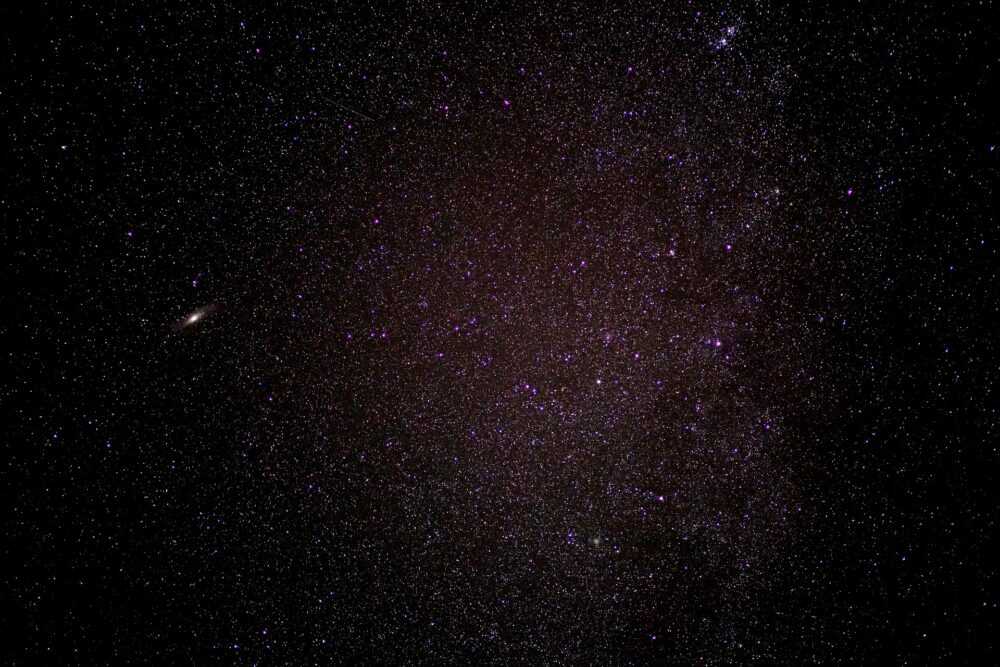Many kinds of stars, called variable stars, change in brightness, increasing and decreasing in luminosity over periods as long as years or as short as fractions of a second.
However, these changes are dependable patterns that repeat over the star’s lifetime, and these fluctuations can only account for up to two percent of the star’s total brightness. But it seems one star missed the memo. Tabby’s Star has baffled astronomers since its detection in 2015, with deep dips in brightness following no discernable pattern.
The strange behaviors of this star were first noticed by citizen scientists working on the Zooniverse Planet Hunters Project. This project invites volunteers to sift through the enormous amounts of data from the Kepler telescope. Since its launch in 2009, Kepler has amassed quite a lot of data: observations of over 150,000 stars created over 10 billion data points over the course of the entire mission. Sophisticated algorithms comb through this data to identify planet transits – places where a planet crossed in front of its star while Kepler was watching, creating a momentary dip in brightness. But these algorithms are not infallible. To catch what these algorithms might have missed, volunteers visually assess the data, looking for evidence of transits. Data from one star struck planet hunters as peculiar: it showed strange dips in brightness inconsistent with planet crossings. The star, KIC 8462852, was flagged for closer study.
These strange, asymmetric dimming events could not possibly be caused by a transiting planet.
This puzzling star was picked up by Dr. Tabetha Boyajian at the Louisiana State University, who dubbed it the “WTF” star – WTF obviously standing for “Where’s The Flux?”. The star seems perfectly normal, except for the fact that it has been observed to unexpectedly dim for several days at a time by up to 20 percent of its original brightness. These strange, asymmetric dimming events could not possibly be caused by a transiting planet: transits occur like clockwork, periodically causing a perfectly symmetrical dip in brightness of only about one percent.
Astronomers were stumped. If not a transiting planet, what could be causing these immense dips in brightness? After considering and discarding several ideas, Boyejian and her team begrudgingly settled on naming a swarm of comets, chunks of ice or rock with dusty trails, as the culprit. The comets’ trails could cause the asymmetric dimming seen in the data. The dips in brightness these comets cause will look very erratic, as comets often orbit for longer periods and are not centered around the star, instead passing very close to the star at periastron and slingshotting out to the far reaches of the star’s gravitational influence. This hypothesis was immediately criticized by the rest of the astronomy community, but astronomers struggled to come up with a better explanation.
Dr. Boyajian and her team later came back to the table, postulating that the missing flux was being blocked by a dust cloud surrounding the star. Dust clouds are far less opaque than a planet and are more unevenly dispersed, meaning the amount of light blocked varies by density of the cloud and the wavelength of light that cloud more readily absorbs. Clouds of dust behave as a non-cohesive body and are less prone to showing periodic behavior. This could account for the erratic timing of the dimming events seen in Tabby’s star. Further support for this hypothesis came from an analysis by Boyajian et al. of the data from one dimming event at different bandpasses, or looking at the different colors in the light from Tabby’s star. This analysis revealed that more red light is making it through the barrier, while more blue light is being blocked. This dust could come from planetesimals, a disintegrating planet, the dusty trails of comets, or collisions between these objects, which means the original hypothesis was not so ridiculous after all. The results of further analysis of the other dimming events are on their way and will shed more light on this mystery.
Dr. Boyajian and her team postulated that the missing flux was being blocked by a dust cloud surrounding the star.
A third, more fanciful explanation had both conspiracy theorists and sci-fi enthusiasts trembling with excitement. Some proposed that a Dyson sphere is responsible for the missing flux. A Dyson sphere is a megastructure built around the star, gradually siphoning the star’s energy to power various trappings of an alien civilization. This idea that the WTF star may be indicative of alien presence gained so much traction that SETI (Search for ExtraTerrestrial Intelligence) pointed a radio telescope at it, hoping that if this were true, they would catch some whisper of overheard communication. Much to the disappointment of many, they have so far detected nothing out of the ordinary. Alas, this postulation was laid to rest with the analysis of the data in different bandpasses, which revealed that more light at certain wavelengths was making it through the mysterious barrier than at others. If the barrier were opaque, as would be the case with an artificial structure like a Dyson sphere, then light at all wavelengths would be blocked equally.
The dust hypothesis seems most plausible at this point, though new developments are surely to come. Alas, just when the scientific community thought they had arrived at the most plausible explanation, some guy on twitter overshadowed their efforts with his far superior theory:

